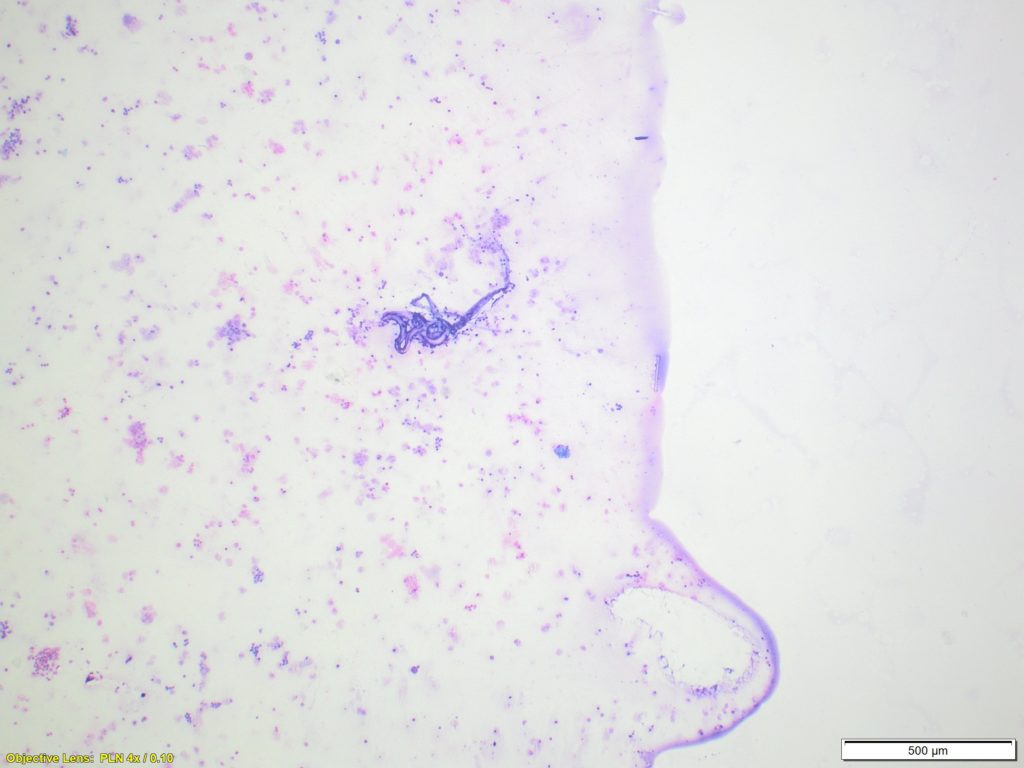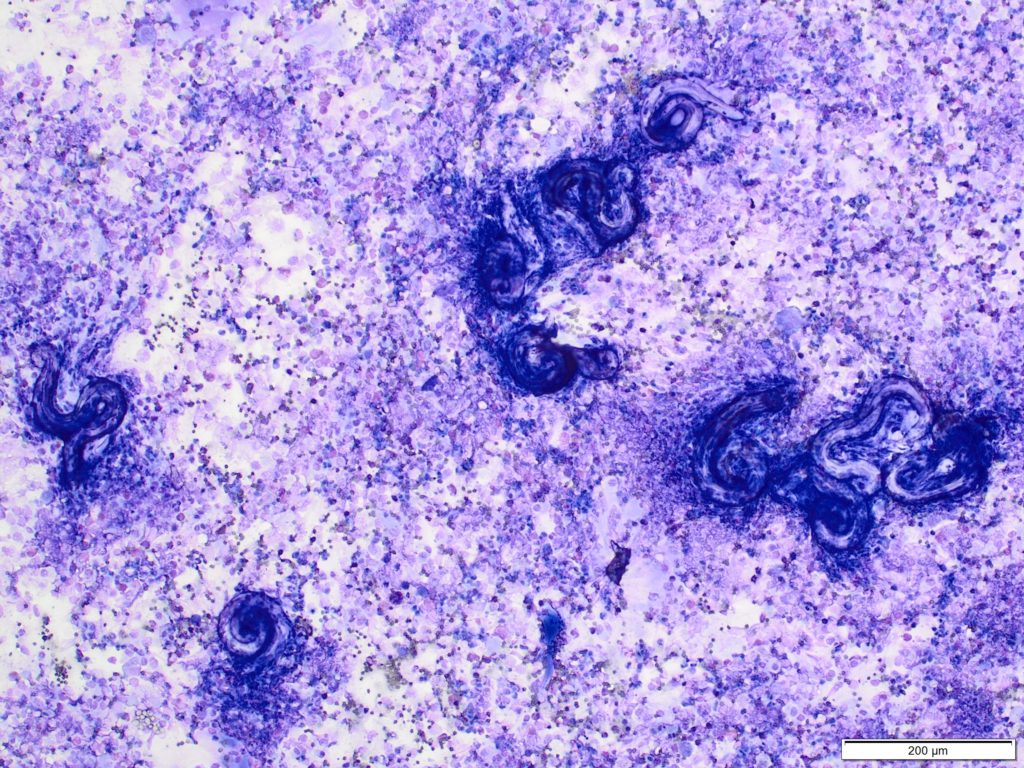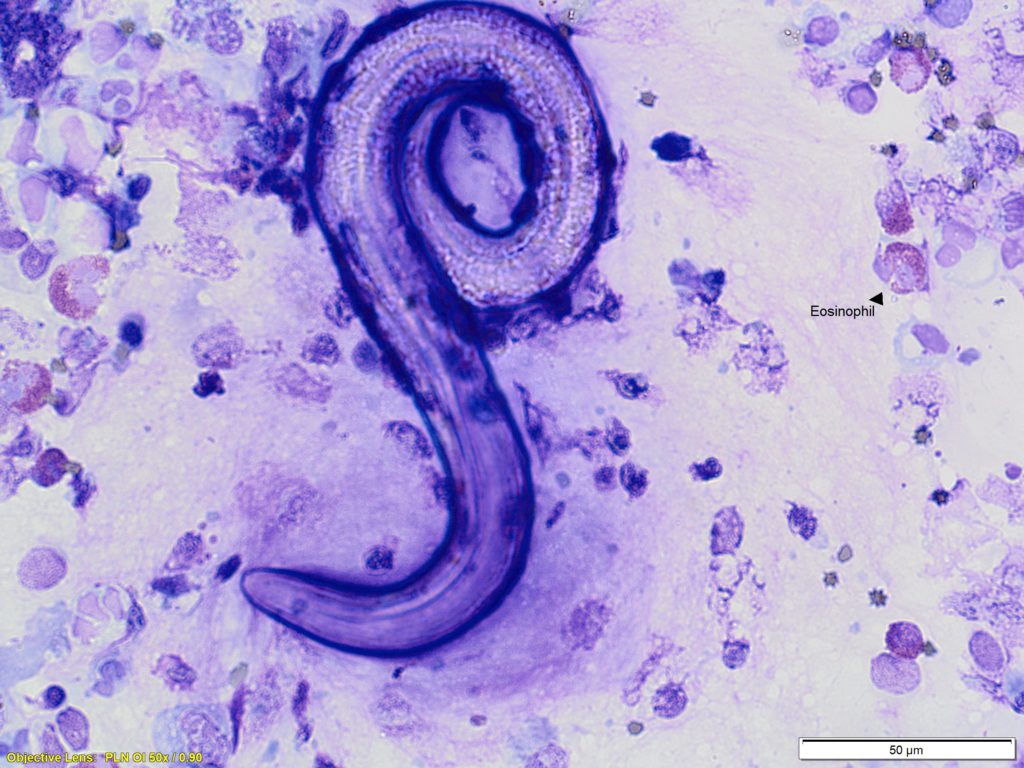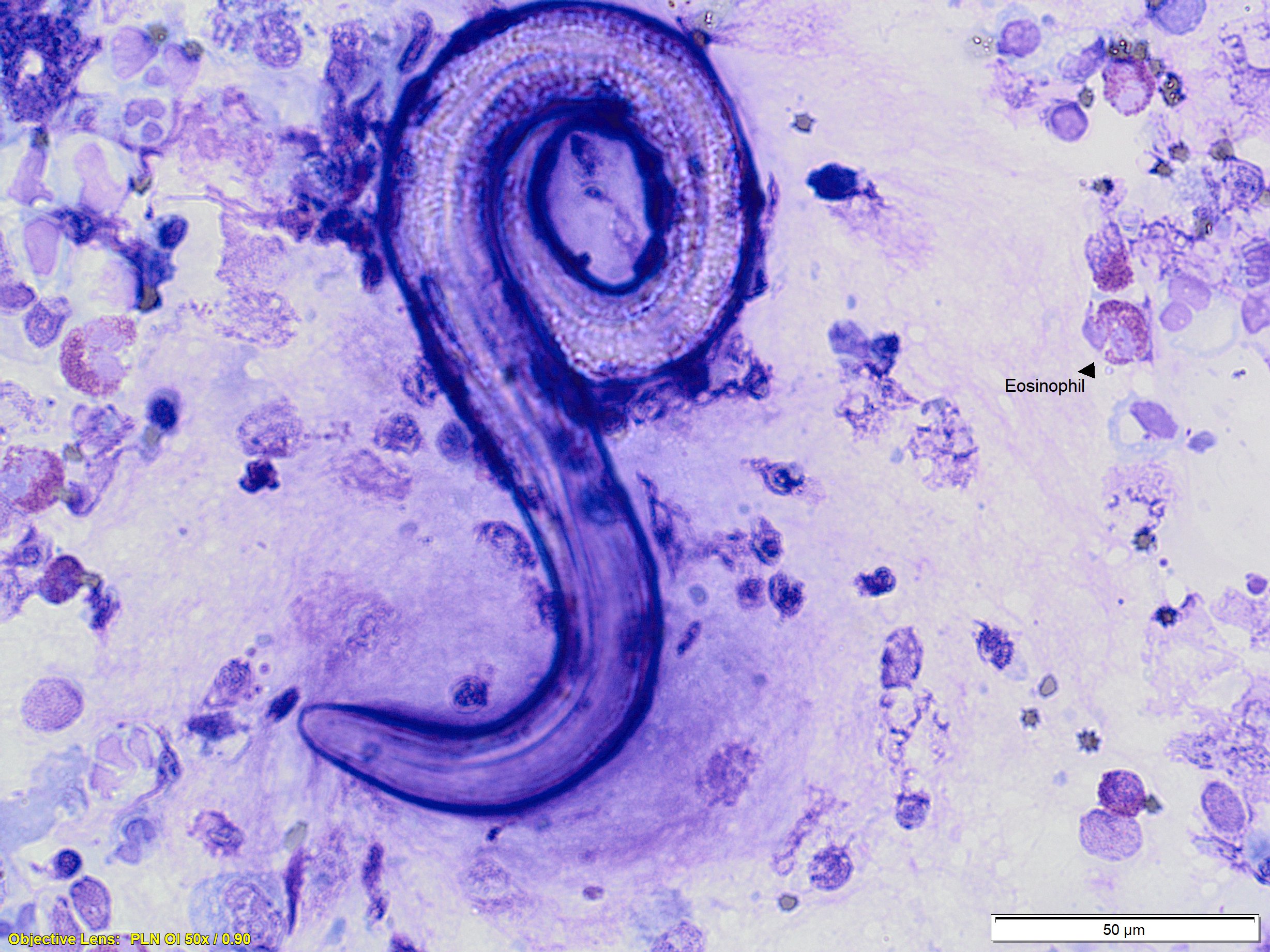KAREN BAILEY
Clinical history:
An animal rescue organisation uplifted a stray/feral entire female tabby, estimated to be about 10 years old. She had probably been feeding herself by hunting and scavenging.
The cat was re-homed in a multi-cat rescue household and fed a variety of commercial cat food. She had several health issues including hind leg ataxia and developed a chronic cough Further investigation revealed anaemia and back pain.
Although radiographs of the spine were unremarkable, small opacities were noted in a generalised pattern throughout the lungs. Coughing improved with antimicrobial treatment but did not resolve and a bronchoalveolar lavage was performed. Laboratory findings:
Cytology of a direct smear from this sample is shown in Figure 1.

Additional cyto-centrifuged preparations made from the fluid revealed a mixed inflammation including large numbers of eosinophils as well as numerous lungworm larvae. (Figures 2 and 3).


Discussion:
Lungworm is an unusual diagnosis in pet cats in New Zealand as most are treated regularly with parasiticides. The most common species is Aelurostrongylus abstrusus. Adult worms in the lungs lay eggs which hatch into first stage larvae and are coughed up, swallowed and passed in faeces. Infection of a mollusc (slug, snail) leads to larval development. Cats become infected by consuming third stage larvae in the mollusc or in a paratenic/transport host (bird, lizard, rodent) which has eaten the mollusc. Larvae migrate from the gastrointestinal tract into the lungs and develop into adults which start laying eggs after about one month and can live more than 9 months.
Follow up:
Monthly treatment with a broad spectrum topical product containing fipronil, (S)-methoprene, eprinomectin and praziquantel was initiated and her cough resolved completely, but, unfortunately her ataxia proved intractable and she was euthanased several months later.
Many thanks to Gabby Mark, The Vet Centre Marlborough, for samples and history on this case.

